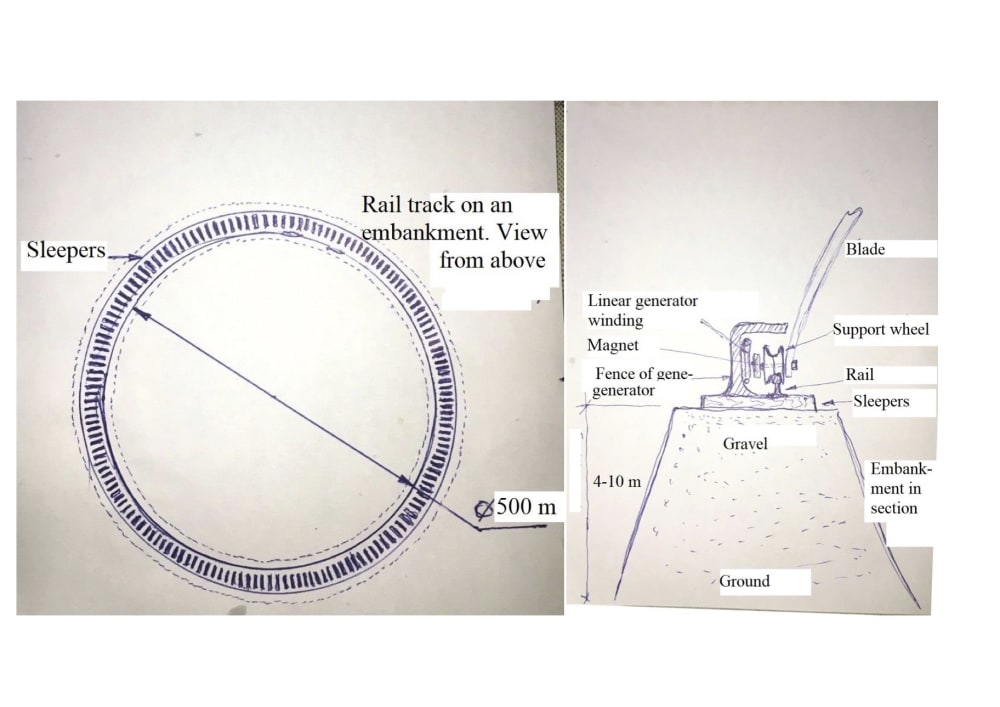The known vertical-axis Darrieus rotors have a number of advantages over horizontal-axis turbines.
- All the heaviest parts (generator, multiplier, brakes) are located below, on the surface of the earth.
- There is no need to turn the turbine against the wind. The Darrieus rotor works in any wind direction.
- The blade profile is symmetrical and has no twist. The profile is the same size along the entire length of the blade, so such blades are made by extrusion, which significantly reduces the cost of their production.
The disadvantages include a rotating mast (tower), which makes it difficult to increase the height of the turbine. Tension cables that increase the stability of the tower have to be moved outside the swept area. This increases the area occupied by the turbine, and the rotating mast increases the risk of vibration of the entire turbine. These shortcomings led to the fact that the Darrieus rotor was not widely used in power versions up to 110 kW. Only low-power rotors up to 10 kW are more or less widely used.
To eliminate the shortcomings of the Darrieus rotor, I propose to place the lower ends of the blades on a circular rail.
In this option, the mast may not rotate, which will allow it to dramatically increase its height, both through guy wires and using a conventional metal or reinforced concrete mast. As you know, the height of such towers can reach 500 meters (Ostankinskaya). The diameter of the rail track can reach 500 meters. Then the swept area can grow to 223,000 sq.m. At a wind speed of 12 m/sec, such a wind turbine can develop a power of up to 100 megawatts.
In this case, the movement of the lower end of the blade along the rail will be carried out on a magnetic suspension, which will eliminate the friction of the wheels on the rail. The stator of the electric generator will be distributed along the circle of movement of the lower end of the blade. The rotor of the electric generator will consist of magnets attached to the ends of the blades.
The advantage of such a wind turbine, in addition to the above, is that it occupies a significantly smaller land area compared to existing horizontal-axis wind turbines.
Video
Like this entry?
-
About the Entrant
- Name:Yusup Kamalov
- Type of entry:individual
- Patent status:pending

